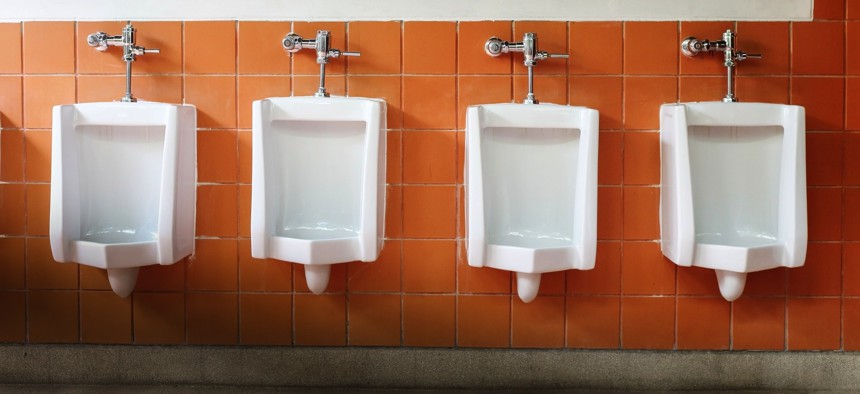How Much Marijuana Will Be Detected in Municipal Sewage?

Sutichak Yachiangkham / Shutterstock.com
National Institutes of Health funding will aid researchers sampling two Washington state wastewater system to test local cannabis use.
Earlier this month, Route Fifty featured the work by Seattle Public Utilities to test the levels of pollutants and contaminants that turn up in the debris collected by municipal street sweepers—stuff like PCBs, fecal coliform and phosphorus that can cause algal blooms in local waterways.
It’s nasty, but important research.
Now, two wastewater systems in Washington state are being used as test subjects by researchers testing local sewage for a different type of substance: marijuana.
In September 2014, the idea of testing municipal sewage for THC, the psychoactive chemical in marijuana, was brought up during a Spokane City Council meeting.
“What an awesome new use for our sewage,” Councilman Jon Snyder said at the time, according to The Spokesman-Review.
Testing sewage would be a more accurate measure of marijuana use than from self-reported surveys.
And Washington state, which has legalized recreational marijuana sales authorized by the voter-approved Initiative 502, is an interesting test subject.
On Monday, the University of Puget Sound in Tacoma announced that the National Institutes of Health will contribute $120,000 to the research of Dan Burgard, an associate chemistry professor, to study the impacts legalized marijuana sales have had on cannabis usage patterns by analyzing sewage samples from two wastewater systems in western Washington. Those sewage systems won’t be identified until the three-year pilot concludes.
According to the university’s announcement:
The research is being done in collaboration with University of Washington’s Caleb Banta-Green, a senior scientist at the Alcohol and Drug Abuse Institute. It has the potential to provide health and civic authorities across the country with valuable information about:
- Whether (and how much) marijuana use went up, per capita, after legalization in a population center in Western Washington
- Whether the opening of new, legal stores correlated to a change in community cannabis use, as well as estimating the market share of the drug’s legal recreational use, compared to that of medicinal and black-market drug use
- Any trends in different days of the week
- How the total consumption of legal recreational marijuana changes between 2013 and 2017 (i.e., whether there will be a “honeymoon” period of popularity and then consumption will drop off)
- How the research results correlate with national surveys on marijuana, allowing authorities to confirm national estimates of total population cannabis use (currently estimated at about 17 million people who used marijuana “in the prior month”)
Testing sewage for drug use among local populations is not a new technique. Burgard’s research has previously looked at amphetamines use in university communities during exam time.
Sewage samples in London have shown elevated levels of cocaine use—737 mg per 1,000 people in 2014—the highest concentration in the more than 50 European cities tested, according to The Guardian.
NEXT STORY: ‘Record Pace’ for Oklahoma Earthquakes; A Long Legislative Summer Ahead in Raleigh?






